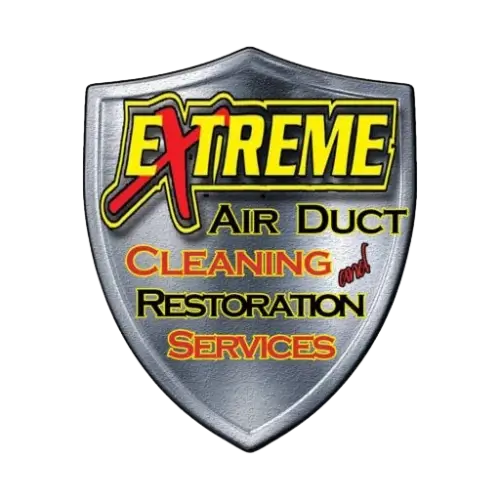Mold on bathroom ceilings is a common issue many homeowners face. It can cause health problems and damage to your home if not addressed promptly. At Extreme Air Duct Cleaning and Restoration Services, we often get questions about “how to remove mold from bathroom ceiling.” This comprehensive guide will cover the causes of mold growth, how to effectively remove it, and how to prevent it from returning.
Why Mold Grows on Bathroom Ceilings?
Mold thrives in damp, humid environments, making bathrooms a prime target. Common causes of mold growth on bathroom ceilings include:
- Poor Ventilation: Insufficient airflow leads to moisture buildup.
- High Humidity: Showers and baths create high humidity levels.
- Water Leaks: Leaks from pipes or the roof can cause mold.
- Condensation: Temperature differences between the bathroom and the rest of the house.
How to Remove Mold from Bathroom Ceiling?
Removing mold from your bathroom ceiling requires a thorough approach. Here’s a step-by-step guide to help you tackle this problem:
1. Gather Necessary Supplies
Before you begin, gather all the necessary supplies:
- Protective gear (gloves, mask, goggles)
- Ladder
- Plastic sheeting
- Spray bottle
- Cleaning solution (vinegar, hydrogen peroxide, or a commercial mold remover)
- Scrub brush
- Microfiber cloths
- Paint primer and mold-resistant paint
2. Protect Yourself and the Area
Safety first. Wear protective gear to avoid inhaling mold spores or getting them on your skin. Use plastic sheeting to cover the floor and any fixtures to protect them from cleaning solutions and falling debris.
3. Prepare the Cleaning Solution
Fill a spray bottle with your chosen cleaning solution. Vinegar and hydrogen peroxide are effective natural mold removers. You can also use a commercial mold remover for tougher stains.
4. Apply the Cleaning Solution
Spray the affected area generously with the cleaning solution. Let it sit for at least 10-15 minutes to penetrate the mold and kill the spores.
5. Scrub the Mold Away
Using a scrub brush, vigorously scrub the mold off the ceiling. Be thorough to ensure all mold is removed. For stubborn mold, you may need to reapply the cleaning solution and scrub again.
6. Wipe and Dry the Area
After scrubbing, use a microfiber cloth to wipe down the area and remove any remaining mold and cleaning solution. Make sure the area is completely dry to prevent mold from returning.
7. Apply Primer and Paint
To prevent future mold growth, apply a mold-resistant primer to the cleaned area. Once the primer is dry, paint over it with mold-resistant paint. This step provides an extra layer of protection against mold.
Table: Comparison of Mold Removal Solutions
| Solution | Effectiveness | Cost | Safety |
| Vinegar | Moderate | Low | High |
| Hydrogen Peroxide | High | Low | High |
| Commercial Remover | Very High | Moderate | Varies |
Preventing Mold Growth on Bathroom Ceilings
Preventing mold growth is easier than dealing with an infestation. Here are some effective preventive measures:
- Improve Ventilation: Use exhaust fans or open windows to reduce humidity.
- Fix Leaks Promptly: Address any leaks in the bathroom immediately.
- Use a Dehumidifier: Keep humidity levels below 60% with a dehumidifier.
- Regular Cleaning: Clean the bathroom regularly to prevent mold buildup.
- Use Mold-Resistant Materials: Choose mold-resistant paint and building materials.
Extreme Air Duct Cleaning and Restoration Services
For professional mold removal and restoration services, trust Extreme Air Duct Cleaning and Restoration Services in Houston, TX. Our expert team ensures thorough mold removal and prevention, keeping your home safe and healthy. Contact us today to schedule an appointment and protect your home from mold.
FAQs
Q1: What causes mold on bathroom ceilings?
A: Mold on bathroom ceilings is typically caused by poor ventilation, high humidity, water leaks, and condensation. Addressing these issues can help prevent mold growth.
Q2: Can I use bleach to remove mold from the bathroom ceiling?
A: While bleach can kill surface mold, it may not penetrate porous materials. Vinegar or hydrogen peroxide are better alternatives for thorough mold removal.
Q3: How often should I check for mold in my bathroom?
A: Regularly inspect your bathroom for mold, especially in humid areas. A monthly check can help catch mold early and prevent it from spreading.
Q4: What is the best cleaner for bathroom mold?
A: Vinegar, hydrogen peroxide, and commercial mold removers are effective cleaners. Choose a solution that suits your needs and follow the instructions carefully.
Q5: How do I prevent mold from returning to my bathroom ceiling?
A: Prevent mold by improving ventilation, fixing leaks, using a dehumidifier, cleaning regularly, and using mold-resistant materials in your bathroom.
Q6: Should I hire a professional to remove mold from my bathroom ceiling?
A: For extensive mold infestations or persistent mold problems, hiring a professional ensures thorough removal and prevents future growth.
Q7: Can mold on the bathroom ceiling affect my health?
A: Yes, mold can cause respiratory issues, allergies, and other health problems. It’s essential to remove mold promptly to maintain a healthy living environment.
Conclusion
Removing mold from your bathroom ceiling is crucial for maintaining a healthy home environment. At Extreme Air Duct Cleaning and Restoration Services, we recommend following our step-by-step guide to effectively remove mold and prevent it from returning. For professional mold removal services, contact us today. Our experienced team in Houston, TX, is ready to help you keep your home mold-free and safe.


